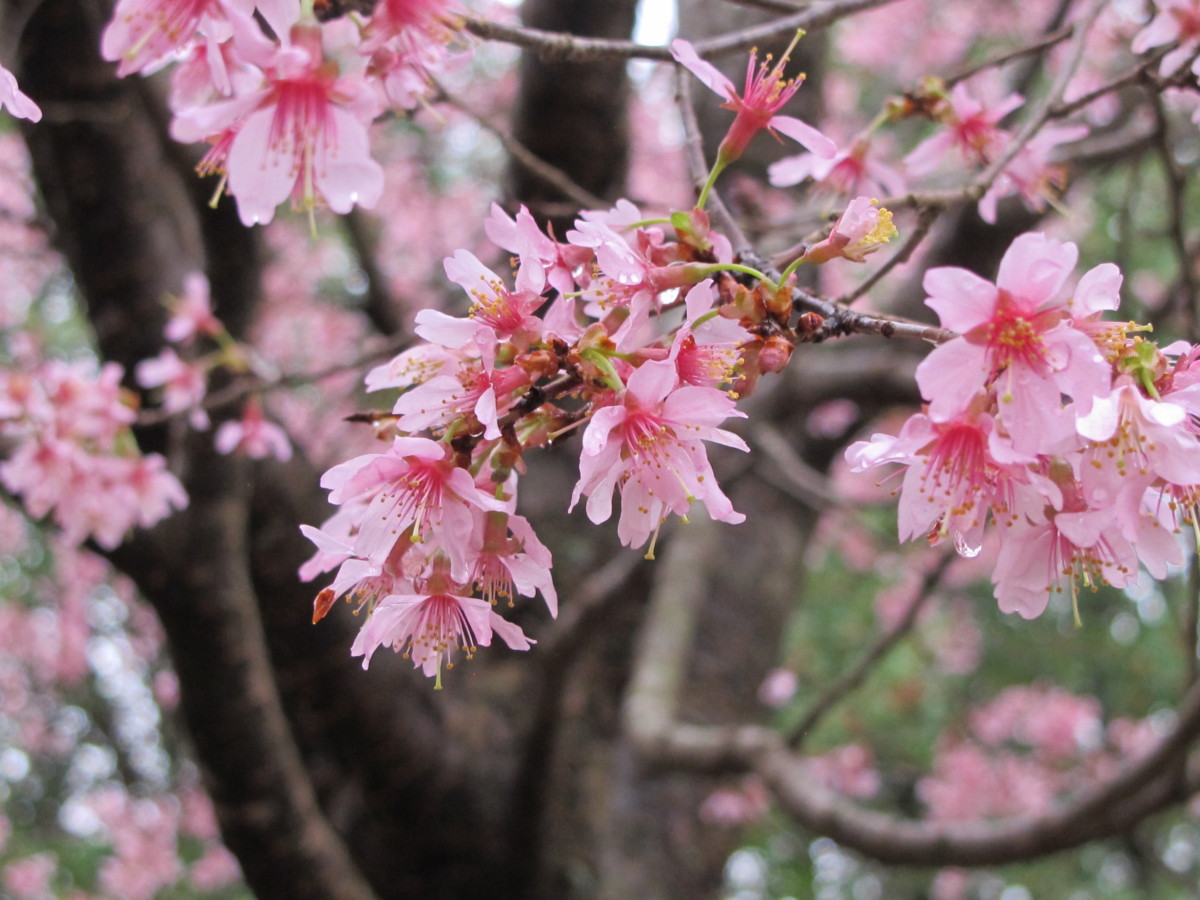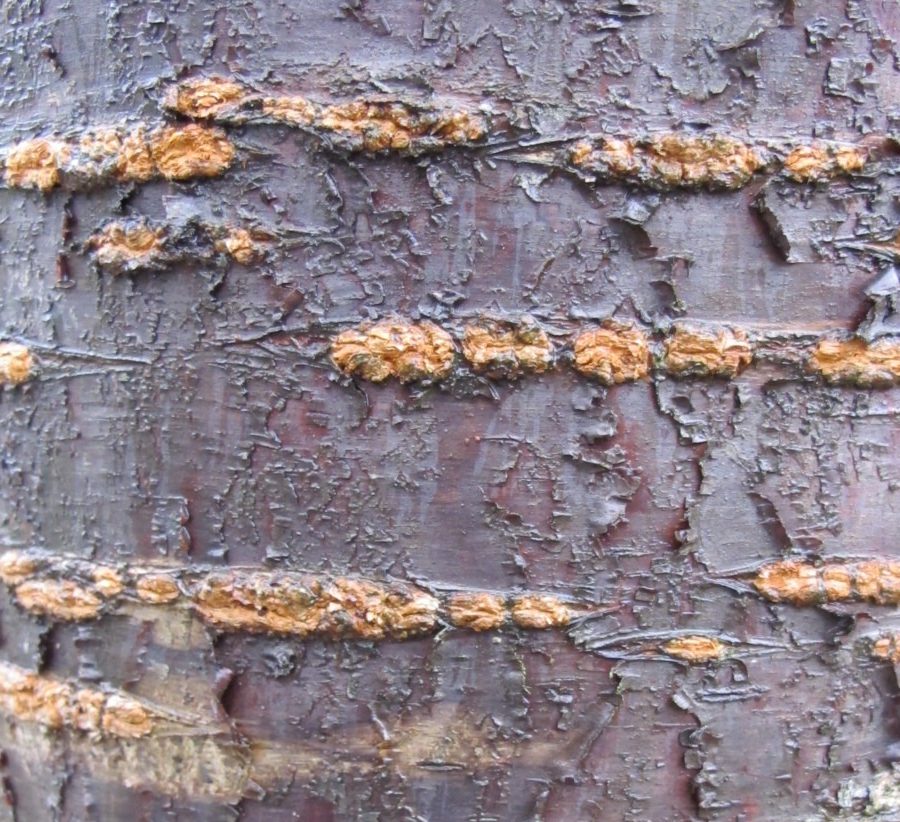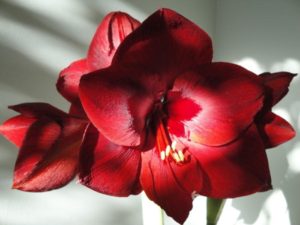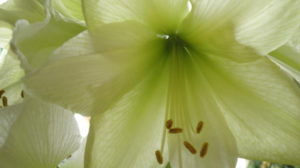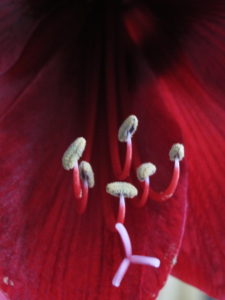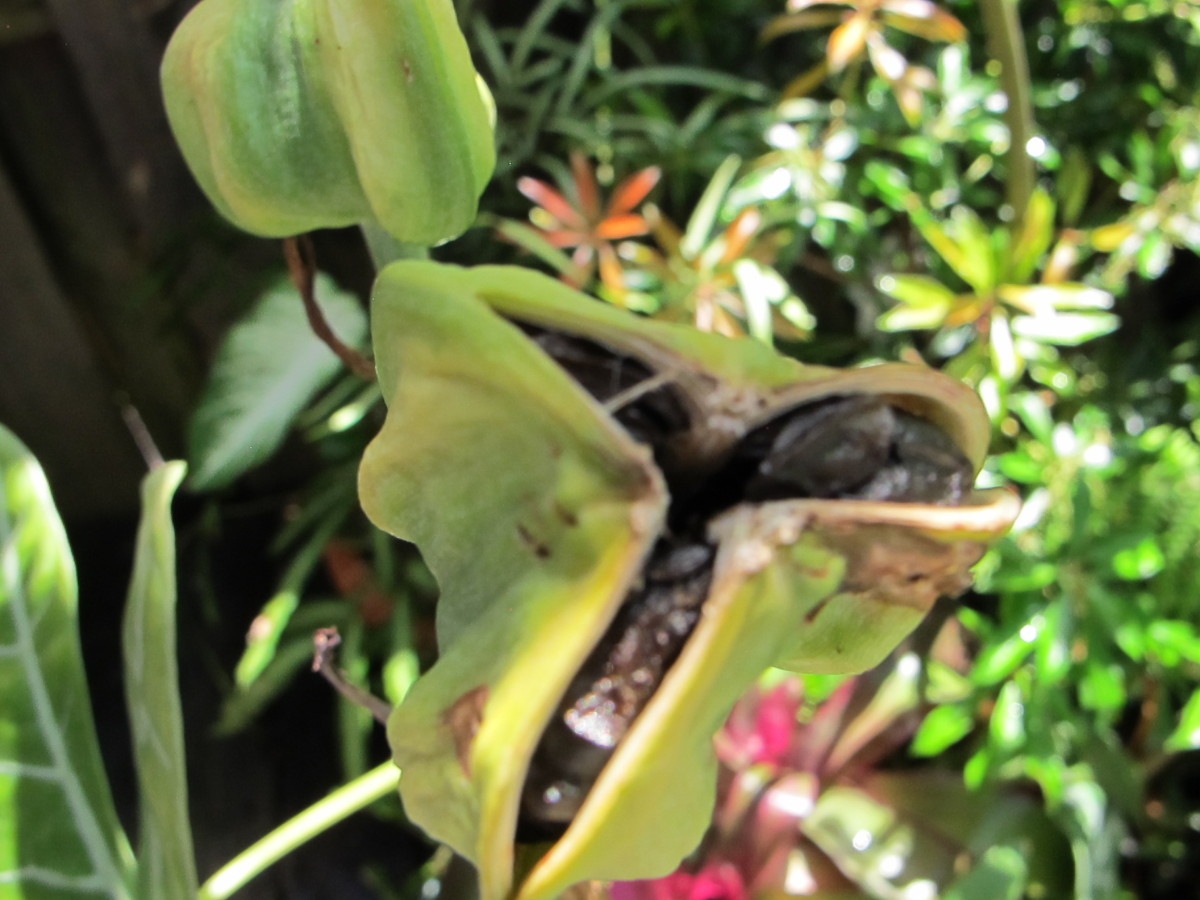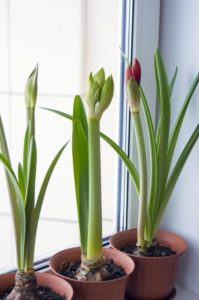2019
Signs of Spring
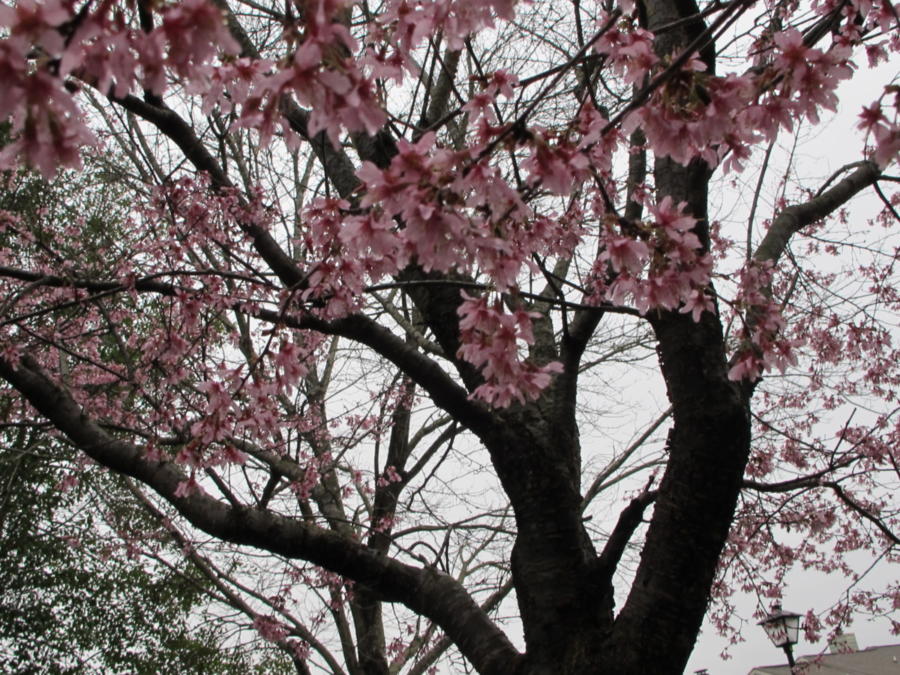
An early blooming cherry tree in the neighborhood. Rain darkened the bark, providing contrast with flowers.
Early Spring Bloomers
- One of the small cherry trees.
- Rows of lenticels in the bark.
The birds are singing their spring songs (I love waking up to that), and the delicate sweet fragrance from early blooming trees floats on the breeze. Spring-flowering bulbs of all sorts are pushing up emerald green spears, and some of the daffodils are coming into full bloom.
A few varieties of cherry trees, with their characteristic horizontal banding of lenticels on the bark, are blooming now, in late winter. Lenticels are pores that allow gas exchange between the plant and the atmosphere. Autumn cherry trees (Prunus subhirtella ‘Autumnalis’) in neighborhoods I sometimes drive through have been flowering non-stop for months. They don’t have the short, showy burst of a ‘Yoshino’ cherry, but any flowers on a winter day are a welcome sight.
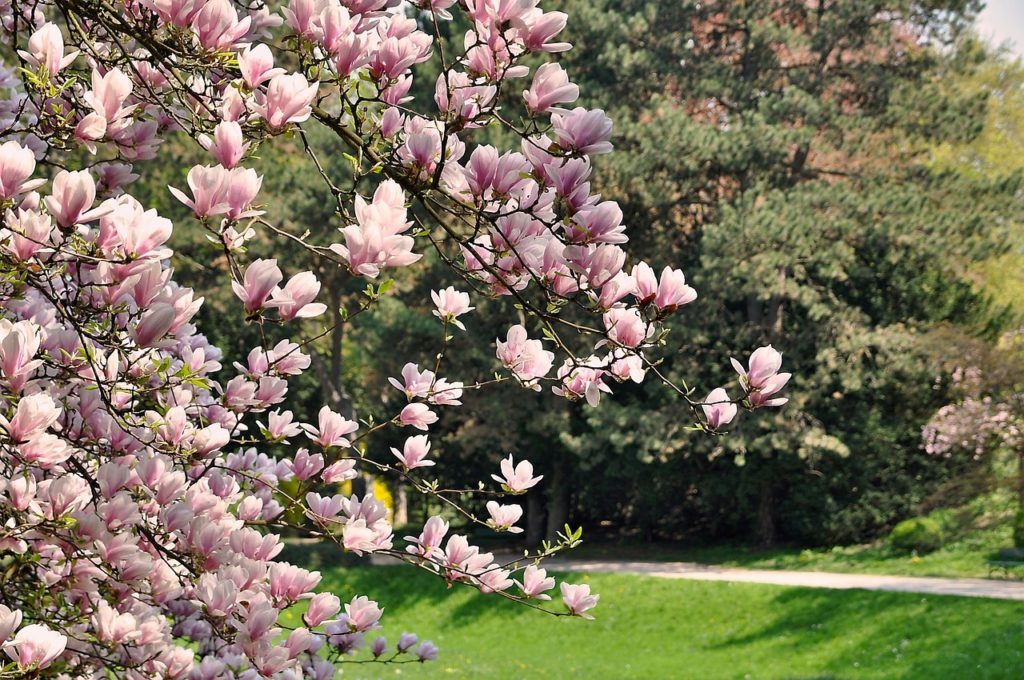
Saucer Magnolia.
Neighborhood saucer magnolias (Magnolia x soulangeana) just started blooming with their pinkish-purple cup-shaped flowers. This can be a tricky species; an untimely frost can turn all the open flowers brown in a flash. Look for a later-blooming cultivar to plant in spring, plant it in a protected location, or take your chances! You can now find a wider range of flower colors (yellows and purples) thanks to modern breeding.
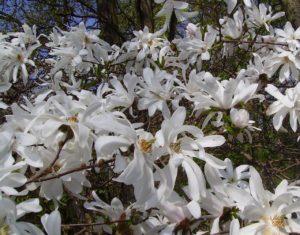
Star magnolia.
The related star magnolia (Magnolia stellata) is another late winter or early spring flowering tree. Its blooms are white or pink, depending on cultivar, shown against silvery gray bark.
Magnolias prefer full sun and moist, well-drained soil. They dislike root disturbance, so situate them where you won’t be digging around the root system.
Their smaller size recommends them to areas of the property where large trees would be out of place. When designing your landscape, always consider the mature height and spread of a tree’s canopy.
The ‘Yoshino’ Cherry For Spring Flowers
‘Yoshino’ is a hybrid between Prunus speciosa and P. pendula, and was first introduced to Europe and North America in 1902. It grows in USDA Zones 5-8, to a height of about 35′ or 40′. Plant taxonomists proposed that the true scientific name should be Prunus x yedoensis ‘Somei-yoshino’. (The lower-case “x” after the genus Prunus signifies that this variety is an inter-specific hybrid; “yedo”=Tokyo.)
There was some doubt, now resolved, whether this variety was distinguishable from the Jeju flowering cherry. ‘Yoshino’ is genetically different from the King cherry, now named Cerasus x nudiflora. The Jeju cherry is an endangered species, with only a few hundred specimens remaining on Jeju Island.
If you’re planning a trip to the U.S. capital, try to schedule it when the ‘Yoshino’ and other varieties of cherry trees are in full bloom around the city, and particularly at the Tidal Basin (photo, below). Just gorgeous! Much has been written about Tokyo Mayor Yukio Ozaki’s generous gift of thousands of cherry trees back in 1912, meant to celebrate the growing friendship between Japan and the United States. See if you can find a live cam of the Tidal Basin’s cherry trees as they begin to bloom.
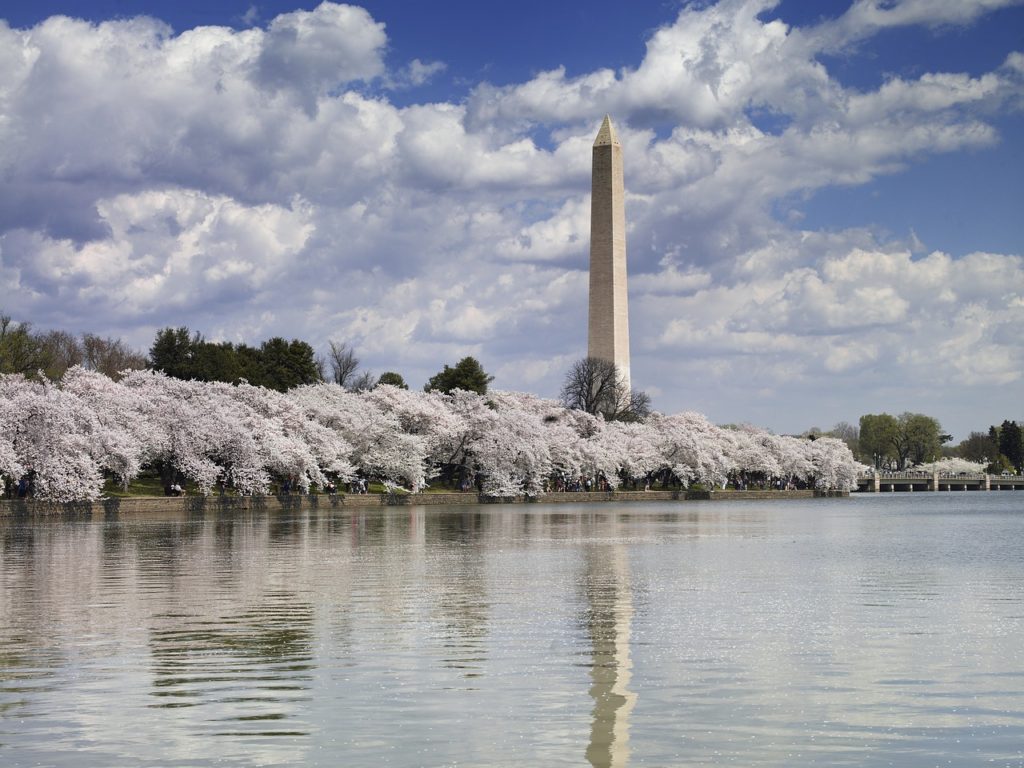
The Washington Monument and cherry trees around the Tidal Basin.
One year, my daughter, Brynn, marched with her high school band in Washington D.C.’s National Cherry Blossom Festival parade. The festival is an annual commemoration of Japan’s gift and a celebration of spring. Check with the National Park Service for the progress of the trees’ buds (posted about March 6), because the two events—the festival and the trees’ peak bloom—often don’t coincide.
In the Landscape
I planted a ‘Yoshino’ cherry in a customer’s garden, behind a pergola that the owner had built at the end of a large pond installed in the family’s back yard. Their concern that it would grow too slowly for them to enjoy the flowers and the full stature of the tree was dispelled after only a handful of years. This is a fast grower, with smooth maroon bark and attractive horizontal branching. Pink flower buds open to clouds of white to pale pink blooms. For many gardeners, ‘Yoshino’ cherry trees are synonymous with spring.
It’s no wonder cherry trees are held in such reverence in Japan and in gardens around the world. They are perfect complements to a pergola, a pond, or an old barn, and often feature prominently in Asian-style naturalistic garden design. Although the ‘Yoshino’ cherry is not the longest living ornamental tree, there are some gnarly 100-year-old specimens in Washington, D.C.
I used to cut budded branches from a tree in our back yard, and force them in a vase indoors. Use stems with buds that have visibly swelled in anticipation of spring.
Another show takes place when all the petals fall to the ground, like pink snow. It’s a lovely sight, and the flowers blow away or disintegrate after a few days. They will stick to the soles of your shoes, so consider that fact if you want one near the house or a frequently used sidewalk.
Headings
Page 1: Early Spring Bloomers, and The ‘Yoshino’ Cherry For Spring Flowers (In the Landscape)
Page 2: Finally, Amaryllis! (“Can I Plant Amaryllis Outdoors?”), Primrose For Spring, Forcing Hyacinth Bulbs (And After They Bloom?), Daffodils, Columbine, The Vegetable Garden (Herbs), Viola, A Rare and Perfect Day, and Ah, Spring!
